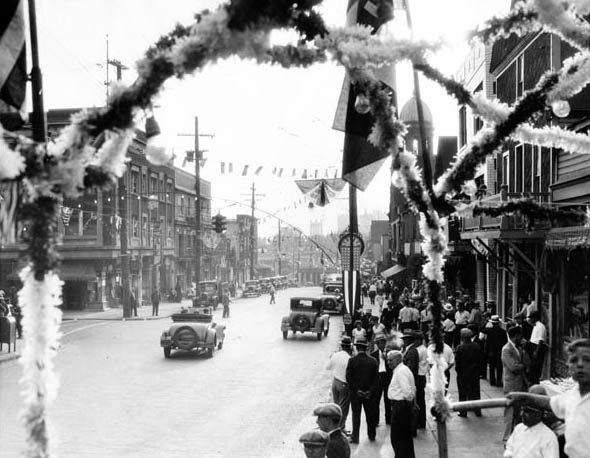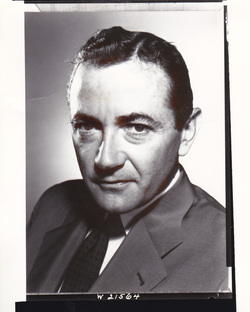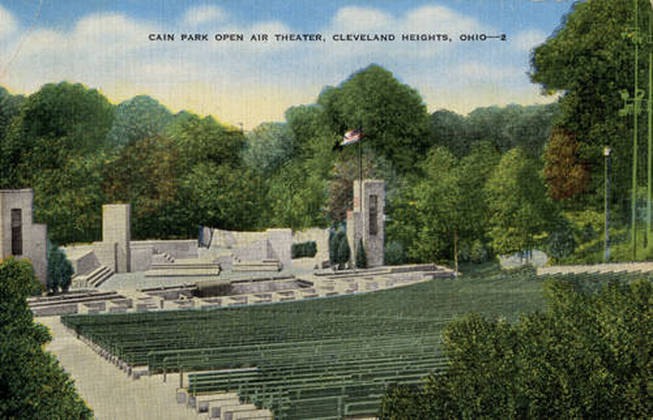Bekah Swope is an MLIS student at Kent State currently completing her work on her practicum. Her project: to digitize subsets of the 1930s and 1960s real estate appraisal cards housed at the Cuyahoga County Archives pertaining to Little Italy's Murray Hill and extrapolate statistics on the streets evolution. In the end, her practicum will involve a collaborative effort between Pursue Posterity, the aforementioned Cuyahoga County Archives, and Cleveland State University.
Little Italy in Cleveland, Ohio is one of the earliest and longest lasting Italian communities in Cleveland. When we look at the microcosm that is Little Italy, we can see an establishment that informs us that early Italian immigrants managed to move inward from the coast early on. Records repeatedly give the impression that, while Cleveland's Italians had their share of hardship and stereotyped suspicions given to them, they managed to have much better quality of life and social acceptance than those Italians in other cities.
“Even though some individuals of Italian descent in Cleveland were involved in crime or were implicated in anti-social behavior, the city's Italians rarely brought disgrace upon themselves, their city, or their newly adopted country. As a group they had possibly the lowest crime rate for Italians of any major city in their country. Statistically, Cleveland's Italian population was consistently ranked among the lowest in terms of welfare relief among all groups, native and foreign born” (Gene P. Veronesi, Italian Americans and their Communities of Cleveland, p. 168-169).
When compared to accounts of the Italian immigrant in general, there is an obvious distinction:
“[Italians] performed the lowliest tasks for meager wages and lived in clannish isolation, with standards of sanitation that were shocking, to say the least, to their more fortunate neighbors. The second generation, born and reared in such environments and under great economic stress, broke with many of the old traditions, and their names began to appear on the lists of criminals and delinquents. Crimes ranked especially high among them. […] In New York, Italians lived for a time at a density of 1,100 to the acre […]. The disease and death rate from tuberculosis was especially high. […] The padrone system, by which boys were imported illegally to work for their employers under conditions suggesting feudal serfdom, aroused great antagonism, and immigration officials found it difficult to break up the practice.” (Carl Witted, We Who Built America, p. 437-440).
Italian immigrants in the United States were not as numerous before 1880 and it may come as a surprise, but more Italians immigrated to South America in the 19th Century than to North America. Hundreds prior to the 1861 Risorgimento were political exiles. As for Cleveland Italians, the 1870 census lists 35 Italians in Cleveland, but it must be noted that the Cleveland City Directory 1864-1865 already had over 20 Italian surnames listed. This makes the data from appraisal cards for Italian communities and, the focus of this project, Little Italy, more coherent.
Data below shows that the center of Little Italy—Murray Hill Road—already had parcels of land being built upon as early as 1850 and having a large number of constructions during the 1880's.
“Even though some individuals of Italian descent in Cleveland were involved in crime or were implicated in anti-social behavior, the city's Italians rarely brought disgrace upon themselves, their city, or their newly adopted country. As a group they had possibly the lowest crime rate for Italians of any major city in their country. Statistically, Cleveland's Italian population was consistently ranked among the lowest in terms of welfare relief among all groups, native and foreign born” (Gene P. Veronesi, Italian Americans and their Communities of Cleveland, p. 168-169).
When compared to accounts of the Italian immigrant in general, there is an obvious distinction:
“[Italians] performed the lowliest tasks for meager wages and lived in clannish isolation, with standards of sanitation that were shocking, to say the least, to their more fortunate neighbors. The second generation, born and reared in such environments and under great economic stress, broke with many of the old traditions, and their names began to appear on the lists of criminals and delinquents. Crimes ranked especially high among them. […] In New York, Italians lived for a time at a density of 1,100 to the acre […]. The disease and death rate from tuberculosis was especially high. […] The padrone system, by which boys were imported illegally to work for their employers under conditions suggesting feudal serfdom, aroused great antagonism, and immigration officials found it difficult to break up the practice.” (Carl Witted, We Who Built America, p. 437-440).
Italian immigrants in the United States were not as numerous before 1880 and it may come as a surprise, but more Italians immigrated to South America in the 19th Century than to North America. Hundreds prior to the 1861 Risorgimento were political exiles. As for Cleveland Italians, the 1870 census lists 35 Italians in Cleveland, but it must be noted that the Cleveland City Directory 1864-1865 already had over 20 Italian surnames listed. This makes the data from appraisal cards for Italian communities and, the focus of this project, Little Italy, more coherent.
Data below shows that the center of Little Italy—Murray Hill Road—already had parcels of land being built upon as early as 1850 and having a large number of constructions during the 1880's.
Note: Little Italy also includes Mayfield Road, but the focus of this research centers on the “heart” of Little Italy—Murray Hill. Data presented here only takes into account those parcels located on Murray Hill Road.
Note: Data provided in the above graph does not include 85 parcels that had no remodeling date on appraisal cards.
The “transformation” period (1930-1945) saw a great influx of Italians to the Cleveland area. Seven Italian neighborhoods eventually were established and typically were differentiated by occupation. Little Italy's Italians become known for their stonecutters (Lake View Cemetery providing great opportunity for work) as well as gardening and tailoring. Remodeling dates offer a look at how Little Italy expanded upon property following this period and can be attested to the strong community network made possible through hometown societies and settlement houses.
Suggested Links:
The Encyclopedia of Cleveland History – Italians :http://ech.case.edu/cgi/article.pl?id=I7
The Encyclopedia of Cleveland History – Little Italy: http://ech.case.edu/cgi/article.pl?id=LI1
Italian Americans and their Communities of Cleveland - http://site.ebrary.com/lib/clevelandstatedr/docDetail.action?docID=10395171
Risorgimento - http://www.britannica.com/EBchecked/topic/504489/Risorgimento
The “transformation” period (1930-1945) saw a great influx of Italians to the Cleveland area. Seven Italian neighborhoods eventually were established and typically were differentiated by occupation. Little Italy's Italians become known for their stonecutters (Lake View Cemetery providing great opportunity for work) as well as gardening and tailoring. Remodeling dates offer a look at how Little Italy expanded upon property following this period and can be attested to the strong community network made possible through hometown societies and settlement houses.
Suggested Links:
The Encyclopedia of Cleveland History – Italians :http://ech.case.edu/cgi/article.pl?id=I7
The Encyclopedia of Cleveland History – Little Italy: http://ech.case.edu/cgi/article.pl?id=LI1
Italian Americans and their Communities of Cleveland - http://site.ebrary.com/lib/clevelandstatedr/docDetail.action?docID=10395171
Risorgimento - http://www.britannica.com/EBchecked/topic/504489/Risorgimento





 RSS Feed
RSS Feed
